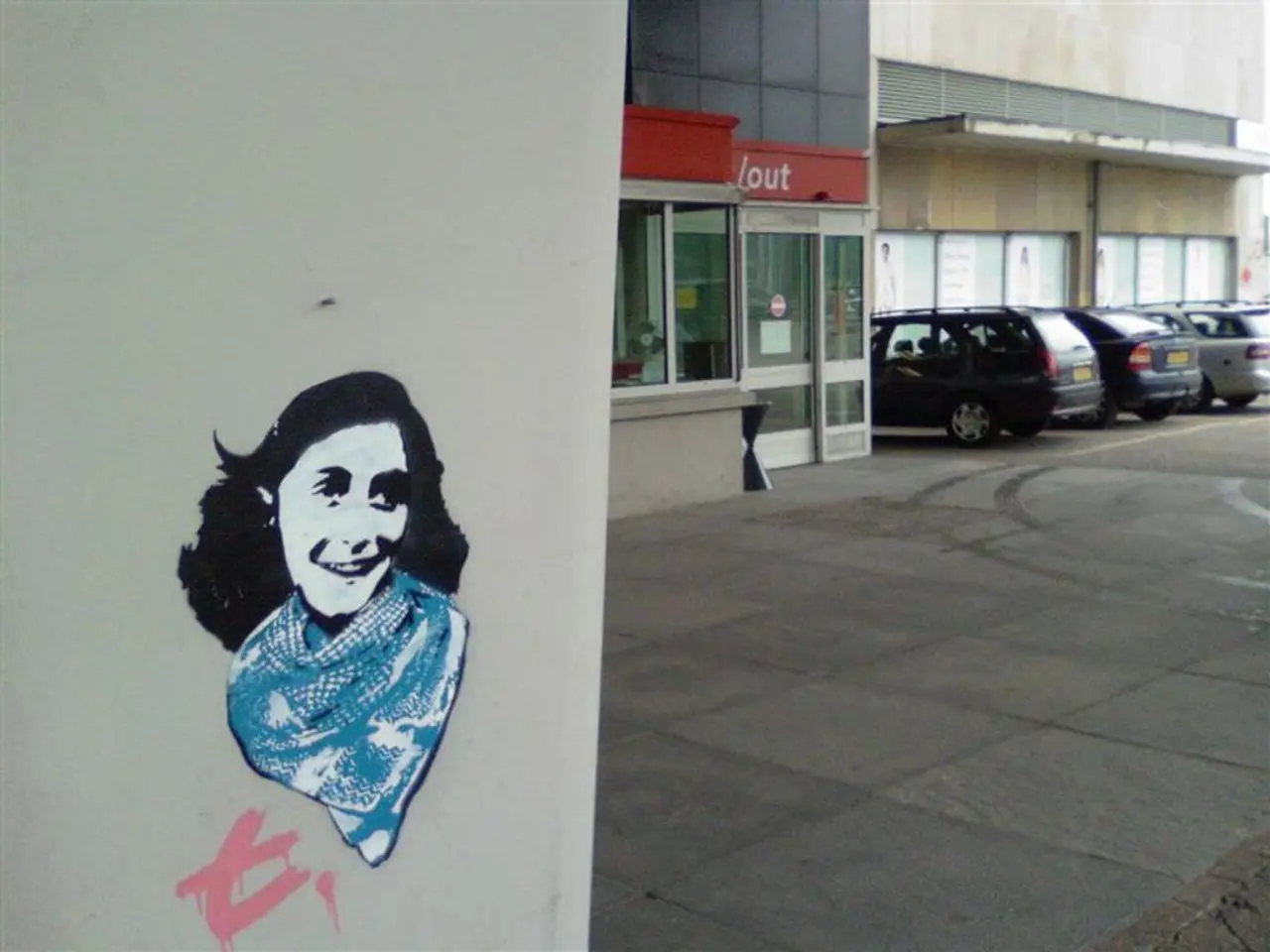Banksy's 'Migrant Child' artwork on a Venice wall removed for restoration work.
In the heart of Venice, the 17th-century Palazzo San Pantalon recently witnessed a significant conservation effort. The focus of this project was the removal and restoration of Banksy's mural, "The Migrant Child," which had been adorning the palazzo's canal-facing wall since 2019[1][2][3].
The mural, a poignant commentary on the global refugee crisis, had fallen victim to the harsh Italian climate, with six years of exposure to humidity, saltwater erosion, and tides taking their toll[1][2][3]. As a result, about 30% of the artwork had either faded or structurally deteriorated, particularly in its lower portion near the lagoon water[1][3].
The restoration effort is financed and supervised by Banca Ifis, an Italian bank that acquired the building in 2024. The bank is not only funding the mural's restoration but is also undertaking a broader redevelopment of Palazzo San Pantalon, transforming it into a contemporary exhibition space that will integrate with the Venice Biennale programming[1][2][4].
The removal process was a delicate operation, involving the careful detachment of the section of the palazzo's facade bearing the mural using angle grinders and hand tools from a barge[1][2][4]. This technique, reportedly used for the first time in Italy, ensured the preservation of the artwork during the transportation to a laboratory.
Restorer Federico Borgogni is stabilizing the artwork in the lab, intentionally avoiding full reconstruction to maintain the mural's current state on a honeycomb support, thereby preserving its authenticity while preventing further deterioration[1][2][4]. As of July and early August 2025, the mural is still undergoing restoration, with plans to display the restored work to the public in free cultural events organized by Banca Ifis after conservation is complete[1][3][4].
However, this restoration has sparked debate in Venice about whether such transient public art should be preserved or left to its natural decay, reflecting tensions around authenticity and urban environmental challenges[1][3]. Some argue that the work's decay is part of its meaning, and consultation with the artist or local community should have occurred before intervening[1][3]. Evyrein, a street artist, even stated that Banksy was aware his waterside creation wasn't meant to endure, and restoring it goes against the grain[1][3].
Despite the controversy, the restoration of Banksy's "Migrant Child" mural in Venice represents a significant and innovative conservation effort, balancing preservation of the artwork with the realities of environmental damage to outdoor murals[1][2][3][4].
References:
- Associated Press
- The Art Newspaper
- The Guardian
- Banca Ifis Press Release
- The restoration of Banksy's "The Migrant Child" mural, a contemporary artwork critical of the global refugee crisis, is currently being undertaken in a lab, with a focus on maintaining its authenticity and preventing further deterioration.
- At the 17th-century Palazzo San Pantalon, once adorned by Banksy's mural, an auction or sale of art related to the venue's history could potentially raise funds for future conservation efforts, offering Entertainment and engaging Pop-culture enthusiasts.
- The Venice Biennale, which aims to present international contemporary art, may find it valuable to exhibit Banksy's restored mural in future installations alongside other artworks, further integrating it with the art world.
- As the restored mural, once a poignant commentary on modern society, returns to its original location, it could attract Celebrities and fashionable crowds, turning its display into a significant event in the realms of Art and Entertainment.
- The ongoing conservation of Banksy's mural in Venice raises questions about the preservation of Street Art, with some arguing that the artwork's decay is integral to its meaning and that consultation with the artist and local communities should be prioritized in similar situations.





